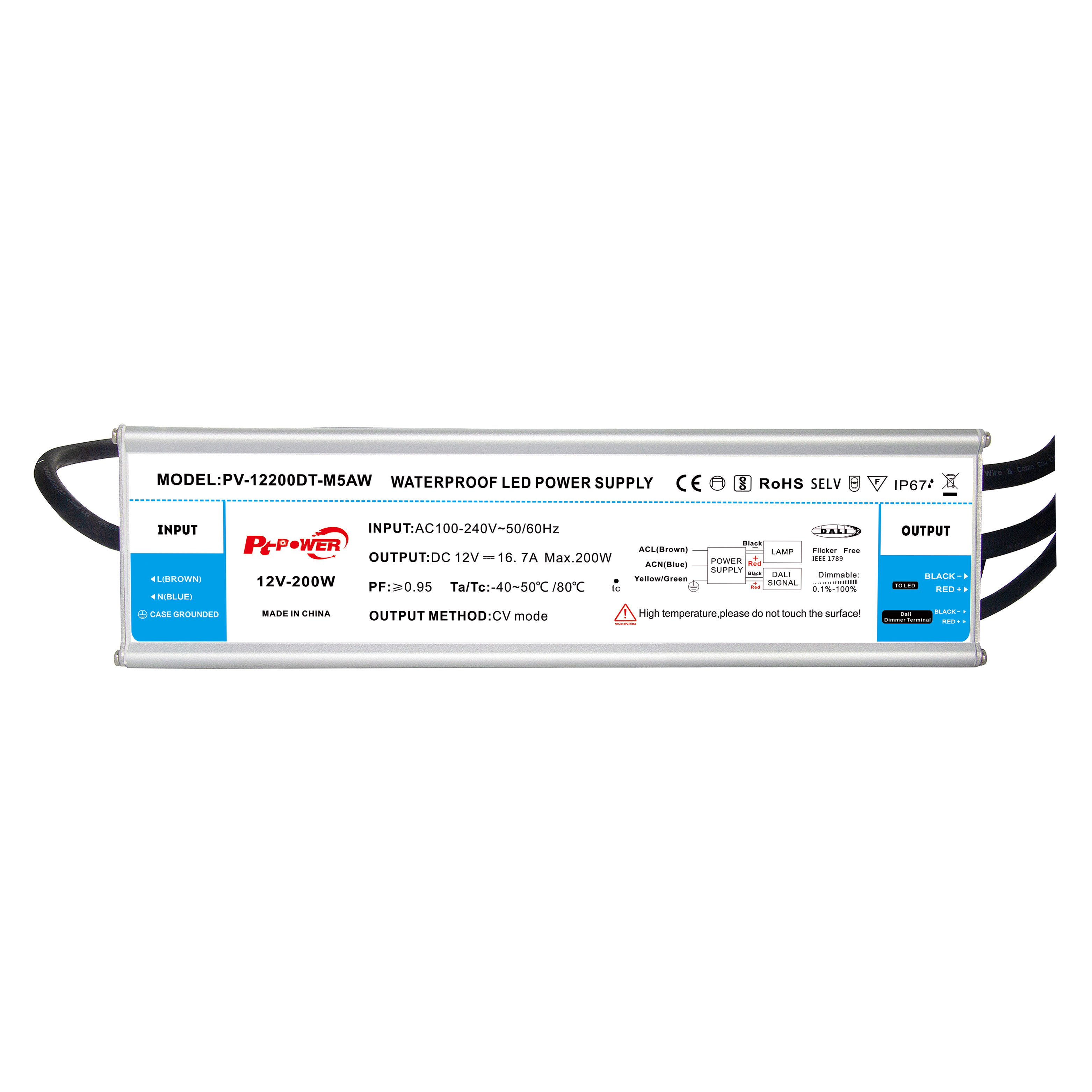How Switching Power Supplies Enhance LED Performance
2025-08-10

How Switching Power Supplies Enhance LED Performance
Table of Contents
- 1. Introduction to Switching Power Supplies and LEDs
- 2. What Are Switching Power Supplies?
- 3. Benefits of Switching Power Supplies for LEDs
- 3.1 Improved Energy Efficiency
- 3.2 Compact Design
- 3.3 Stable Output Voltage and Current
- 3.4 Reduced Heat Generation
- 4. Application of Switching Power Supplies in LED Systems
- 5. Challenges and Considerations
- 6. Future Trends in LED Technology and Power Supply Integration
- 7. Conclusion
- 8. FAQs
1. Introduction to Switching Power Supplies and LEDs
The intersection of switching power supplies and LED technology represents one of the most significant advancements in the field of electrical engineering today. As we transition to energy-efficient lighting solutions, understanding how switching power supplies enhance LED performance becomes paramount. This article will explore this dynamic relationship, focusing on the capabilities of switching power supplies to optimize LED functionality, reliability, and efficiency.
2. What Are Switching Power Supplies?
Switching power supplies (SPS) are a type of power supply unit that converts electrical power efficiently. Unlike linear power supplies, which convert power through resistive components, SPS employs high-frequency switching techniques to manage electrical energy. This method not only increases efficiency but also minimizes the physical size of the power supply.
The fundamental operation of a switching power supply involves converting input voltage into a required output voltage by switching electrical currents on and off at high frequencies. These power supplies typically include components such as transformers, inductors, and capacitors, all working in tandem to regulate voltage and current effectively.
3. Benefits of Switching Power Supplies for LEDs
Switching power supplies offer numerous advantages when integrated with LED technologies. Their attributes significantly contribute to enhanced performance, making them a preferred choice for LED applications.
3.1 Improved Energy Efficiency
One of the standout features of switching power supplies is their ability to deliver high energy efficiency. By minimizing energy losses during the conversion process, SPS can achieve efficiencies often exceeding 90%. This efficiency translates directly into lower energy costs and reduced environmental impact, making it an ideal match for energy-efficient LED lighting solutions.
3.2 Compact Design
Switching power supplies are designed to be compact and lightweight, making them easier to integrate into various applications. This design flexibility allows for streamlined installation in both residential and commercial environments, where space efficiency is crucial. The smaller form factor does not compromise performance; rather, it enhances the versatility of LED installations.
3.3 Stable Output Voltage and Current
LEDs require a stable voltage and current supply to operate effectively. Fluctuations can lead to inconsistent brightness levels or even damage the LEDs. Switching power supplies are adept at providing a stable output, ensuring that LEDs receive the necessary power for optimal performance. This stability translates into longer lifespans for LEDs and consistent illumination quality.
3.4 Reduced Heat Generation
Heat generation is a common challenge in electrical systems. Switching power supplies generate significantly less heat compared to their linear counterparts. This reduction in heat not only enhances system reliability but also minimizes the need for additional cooling solutions. Lower operating temperatures contribute to prolonged LED life and improved overall system efficiency.
4. Application of Switching Power Supplies in LED Systems
The advantages offered by switching power supplies position them as essential components in various LED applications. From commercial installations to specialized lighting solutions, the integration of SPS can dramatically enhance performance.
4.1 Commercial Lighting
In the commercial lighting sector, switching power supplies are extensively used to power LED fixtures in offices, retail spaces, and public areas. Their energy efficiency and compact design allow businesses to reduce operational costs while maximizing lighting quality. Over time, the initial investment in SPS pays off through substantial energy savings.
4.2 Automotive Lighting
Switching power supplies are also critical in automotive lighting systems, powering everything from interior lights to headlights. The ability to handle variable voltages and provide a stable output is crucial for automotive applications, where reliability and performance are paramount. As automakers shift towards LED solutions for energy efficiency, SPS will play an increasingly vital role.
4.3 Backlighting for Displays
In display technologies, switching power supplies are integral to LED backlighting systems. These systems require precise voltage control to achieve uniform brightness across screens. The efficiency and compact form of SPS allow for seamless integration into televisions, monitors, and other display devices, enhancing visual quality and user experience.
5. Challenges and Considerations
While switching power supplies offer several benefits, it is essential to recognize potential challenges associated with their use in LED systems.
5.1 Electromagnetic Interference (EMI)
One concern with switching power supplies is their susceptibility to electromagnetic interference (EMI). The high-frequency operation can lead to noise that may affect other electronic devices. Proper shielding and layout design are crucial in mitigating EMI effects, ensuring that the LED systems operate without interference.
5.2 Cost Implications
Although switching power supplies can save money in the long run through energy efficiency, the initial cost may be higher than traditional power supplies. Organizations must weigh the upfront investment against potential savings in energy costs and maintenance over time. In many cases, the financial benefits justify the higher initial expenditure.
6. Future Trends in LED Technology and Power Supply Integration
As LED technology continues to evolve, the integration of switching power supplies will become even more sophisticated. Innovations in smart lighting and IoT-enabled devices will require advanced power management solutions. The future may see developments such as wireless power transmission and even higher efficiency ratings, further enhancing the synergy between switching power supplies and LED technologies.
7. Conclusion
The role of switching power supplies in enhancing LED performance cannot be overstated. Their energy efficiency, compact design, and stable output make them an indispensable component in modern lighting solutions. As industries continue to embrace LED technology, the integration of high-quality power supplies will be essential for optimizing performance, reducing costs, and ensuring reliability. By understanding and leveraging these advantages, users can maximize the benefits of LED systems, paving the way for a brighter and more efficient future.
8. FAQs
1. What is the primary advantage of using switching power supplies with LEDs?
Switching power supplies offer improved energy efficiency, stability in voltage and current, and reduced heat generation, all of which enhance LED performance.
2. How do switching power supplies differ from traditional linear power supplies?
Switching power supplies operate at high frequencies, providing better efficiency and a smaller form factor compared to linear power supplies, which dissipate more energy as heat.
3. Can switching power supplies be used in all types of LED applications?
Yes, switching power supplies are versatile and can be used across various applications, including commercial lighting, automotive lighting, and display backlighting.
4. What are the potential drawbacks of using switching power supplies?
Potential drawbacks include electromagnetic interference (EMI) and higher initial costs compared to traditional power supplies, which should be considered in the decision-making process.
5. How can businesses justify the upfront cost of switching power supplies?
Businesses can justify the upfront cost through long-term energy savings and increased reliability, making the investment worthwhile over time.
Through understanding the intricate features and benefits of switching power supplies, we can significantly enhance LED performance, leading to a more sustainable and efficient lighting landscape.
Previous:







